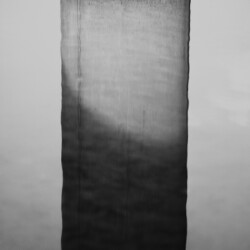GOYO III
I visit temples because I love temples’ atmosphere.
I love temples for their silence.
Temples are noisy with tourists in the holiday season, but only for a while,
and when they get out of it, it’s back into the silence.
In deep silence.
The mind in the mountains is first of all silent.
In the mountains, the water, the grass, the stones, everything is still.
Even people become still when they are carried to the mountain
and embraced in a temple.
Everyday life evaporates. In a temple, our lives turn to limpid silence.
In a temple, all things become abstract.
Even my feet stand on the ground becoming a blank slate as I lose weight.
The cosmic space of weightlessness spreads out there.























